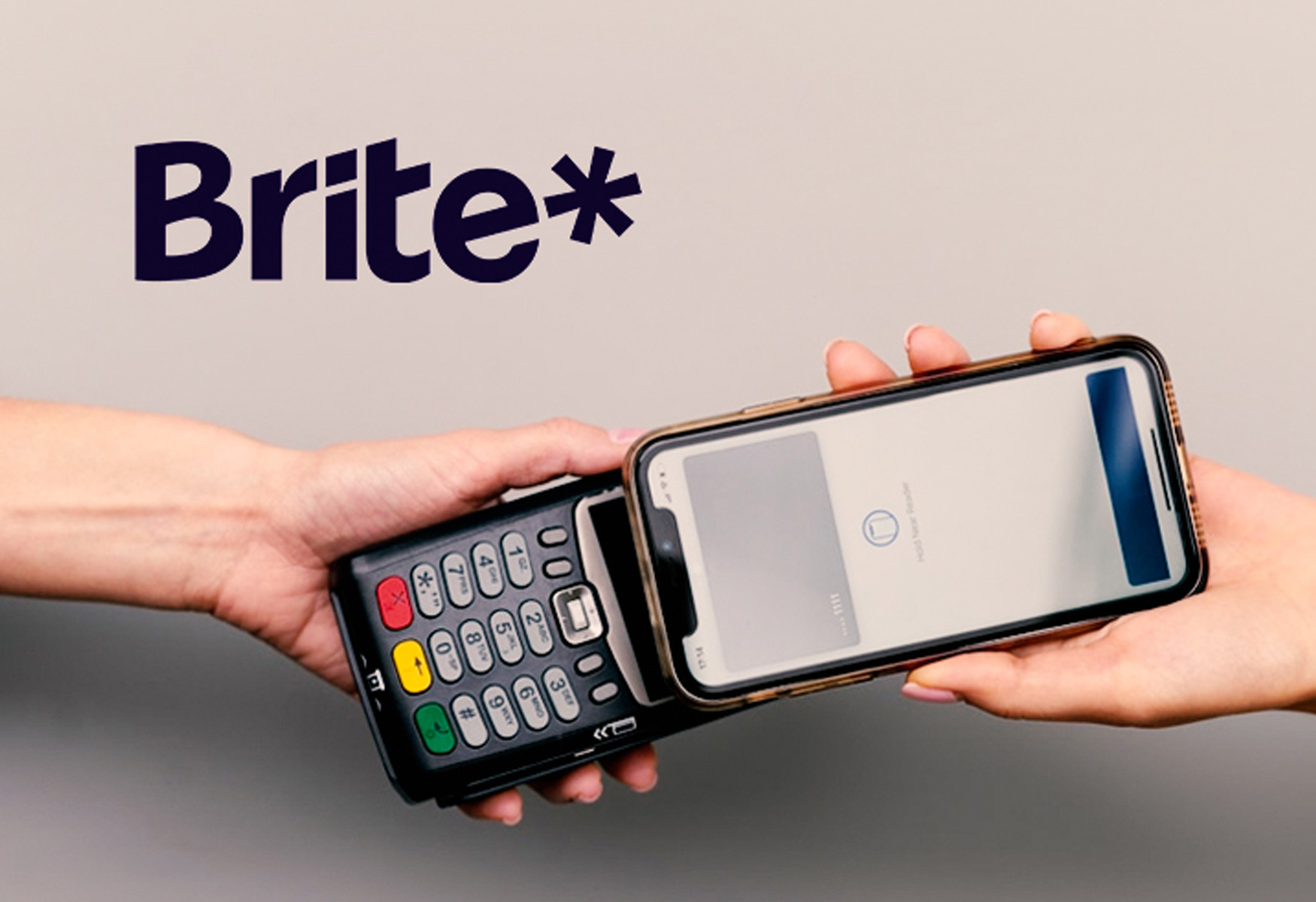Understanding Cryptocurrency
Cryptocurrency has revolutionized the world of finance, offering a decentralized and secure way to perform transactions. Before diving into buying cryptocurrency in the UK, it’s crucial to understand the basics of this digital currency.
At its core, cryptocurrency is a form of digital or virtual currency that is encrypted and decentralized. It operates on a technology called blockchain, which is a distributed ledger that records all transactions across a network of computers. This technology ensures transparency and security, making it nearly impossible to manipulate or cheat the system.
Unlike traditional fiat currencies issued by central banks, cryptocurrencies are not regulated or controlled by any government authority. This decentralization provides users with more control over their money and eliminates the need for intermediaries like banks.
One of the key features of cryptocurrency is its anonymity. Transactions are pseudonymous, meaning that while they are recorded on the blockchain, the real identities of the parties involved are hidden. This has led to concerns about the potential for illicit activities, but it also offers privacy and security benefits to users.
Another vital aspect of cryptocurrencies is their limited supply. For example, Bitcoin, the first and most well-known cryptocurrency, has a maximum supply of 21 million coins. This scarcity factor, combined with the growing demand, has been a significant driver of its value and potential for investment.
It’s essential to note that not all cryptocurrencies serve the same purpose. While Bitcoin is primarily seen as a digital currency, there are others like Ethereum, which focuses on enabling smart contracts and decentralized applications. Understanding the different types of cryptocurrencies can help you make more informed decisions when buying.
To stay up to date with the latest developments in the cryptocurrency world, it’s crucial to follow news and expert opinions. Be aware that the cryptocurrency market is highly volatile, with prices capable of experiencing significant fluctuations in short periods. It’s advisable to conduct thorough research and consult multiple sources before making any investment decisions.
Now that you have a basic understanding of cryptocurrency, let’s move on to the next step: researching different cryptocurrencies available in the market.
Researching Different Cryptocurrencies
Before buying any cryptocurrency in the UK, it’s important to research and understand the various options available in the market. With thousands of cryptocurrencies to choose from, each with its own unique features and potential, taking the time to research can help you make informed investment decisions.
Start by familiarizing yourself with the most well-known and established cryptocurrencies, such as Bitcoin (BTC) and Ethereum (ETH). These cryptocurrencies have a proven track record and tend to have more stability compared to newer and more speculative altcoins.
Next, explore the different use cases and technology behind each cryptocurrency. For example, while Bitcoin is primarily a digital currency, Ethereum offers a platform for building decentralized applications (DApps) and executing smart contracts. Understanding the purpose and functionality of each cryptocurrency will help you evaluate its potential for long-term growth and adoption.
Dig deeper into the team behind the cryptocurrency. Look for information about the developers, advisors, and founders. Are they experienced and reputable in the industry? Do they have a clear roadmap and vision for the cryptocurrency? A strong and competent team is often a positive sign for the future success of a cryptocurrency.
Consider factors such as market capitalization, liquidity, and trading volume. Cryptocurrencies with a larger market capitalization tend to have more stability and a higher likelihood of being widely adopted. Additionally, higher liquidity and trading volume make it easier to buy and sell the cryptocurrency without significantly affecting its price.
Take note of any recent news or developments related to the cryptocurrency you’re interested in. News about partnerships, technological advancements, regulatory updates, or significant events can impact the price and future prospects of a cryptocurrency. Staying informed will help you make timely investment decisions.
Moreover, join online forums and communities to engage with other cryptocurrency enthusiasts. These platforms provide valuable insights, opinions, and discussions on various cryptocurrencies. Additionally, following reputable influencers and experts in the industry can help you gain valuable perspectives and stay updated on the latest trends.
By thoroughly researching different cryptocurrencies and staying informed about the market, you’ll be better equipped to make informed investment decisions. Remember, the cryptocurrency market is highly volatile, and it’s important to diversify your investment portfolio to mitigate risk. With your research completed, the next step is choosing a cryptocurrency exchange to facilitate your buying and selling activities.
Choosing a Cryptocurrency Exchange
Once you have researched different cryptocurrencies and are ready to buy, the next step is to choose a cryptocurrency exchange. A cryptocurrency exchange is a platform that allows you to buy, sell, and trade cryptocurrencies. With numerous exchanges available, it’s essential to consider several factors to ensure you choose a reputable and reliable platform.
Security should be a top priority when selecting an exchange. Look for exchanges that offer two-factor authentication, cold storage for funds, and encryption protocols to protect your assets. Additionally, check if the exchange has a history of security breaches or fraud, as this could be a red flag.
Consider the user interface and experience provided by the exchange. A user-friendly platform with intuitive navigation and clear instructions will make your buying and selling process much smoother. Look for exchanges that provide detailed charts, real-time price updates, and a variety of order types to suit your trading preferences.
Trading fees and transaction costs can vary significantly between exchanges. Some exchanges charge a flat fee per transaction, while others have a tiered fee structure based on trading volume. Compare the fee structures of different exchanges to ensure you find one that aligns with your investment strategy and budget.
Liquidity, or the ease of buying and selling your cryptocurrencies, is an important consideration. Higher liquidity means there’s a larger pool of buyers and sellers, resulting in tighter spreads and faster execution of orders. Look for exchanges that have high trading volumes and support a wide range of cryptocurrencies to provide you with ample liquidity options.
Transparency and regulation are vital when selecting an exchange. Ensure that the exchange operates under regulatory frameworks and complies with the necessary legal requirements. Exchanges that are transparent about their operations, partnerships, and team members are generally more trustworthy.
Research the customer support options offered by the exchange. Prompt and reliable customer support can be crucial, especially if you encounter any issues or have questions while using the platform. Look for exchanges that offer multiple support channels, such as live chat, email, or phone, and have a reputation for providing timely and helpful assistance.
It’s also worth considering the additional features and services provided by the exchange. Some exchanges offer margin trading, lending, staking, or even their own native tokens. These features can add value to your overall cryptocurrency investment strategy, so it’s worth exploring the offerings of different exchanges.
Once you’ve assessed the various factors mentioned above, weigh the pros and cons of each exchange to make an informed decision. Consider starting with a well-established and reputable exchange that has a good track record in terms of security, user experience, and customer support. By choosing the right cryptocurrency exchange, you’ll have a solid foundation for entering the world of cryptocurrency trading in the UK.
Registering and Verifying Your Account
Once you’ve chosen a cryptocurrency exchange, the next step is to register and verify your account. Registering an account is usually a straightforward process that requires providing your basic information, such as your name, email address, and sometimes a phone number. Follow these steps to get started with your account registration and verification.
1. Visit the website of the cryptocurrency exchange you’ve chosen. Look for a “Sign Up” or “Register” button and click on it to begin the registration process.
2. Fill out the registration form with accurate information. This usually includes your name, email address, and a password. Make sure to choose a strong password that includes a mix of letters, numbers, and symbols to enhance the security of your account.
3. Confirm your email address. Most exchanges will send a verification email to the email address you provided during registration. Open your email inbox, look for the verification email, and click on the link to verify your account. Some exchanges may require additional steps for email verification, such as entering a verification code.
4. Complete the account verification process. Cryptocurrency exchanges adhere to strict Know Your Customer (KYC) and Anti-Money Laundering (AML) regulations. To comply with these regulations, you’ll need to verify your identity by providing additional documentation. This typically includes a copy of your government-issued ID, such as a passport or driver’s license, and sometimes proof of address, such as a utility bill or bank statement.
5. Upload the required documents through the exchange’s platform. Follow the instructions provided by the exchange to securely upload the necessary documents. Ensure that the documents are clear and legible to expedite the verification process.
6. Wait for your account to be verified. The time it takes to verify your account can vary depending on the exchange and the volume of verification requests they receive. Some exchanges may have automated verification processes, while others may require manual review. Be patient and check your email regularly for any updates or requests for additional information.
7. Once your account is verified, you’ll typically receive a notification or confirmation email. From there, you’ll have full access to the exchange platform and be able to deposit funds and start buying cryptocurrencies.
It’s important to note that the verification process is a necessary step to ensure the integrity and security of the exchange and its users. By adhering to KYC and AML regulations, exchanges help mitigate risks such as fraud, money laundering, and other illicit activities.
Keep in mind that different exchanges may have variations in their account registration and verification processes. Always refer to the specific instructions provided by the exchange you’ve chosen to ensure a smooth and successful account setup.
Now that your account is registered and verified, you’re ready to move on to the next steps in the cryptocurrency buying process. In the next section, we’ll discuss how to set up a cryptocurrency wallet to securely store your digital assets.
Setting Up a Cryptocurrency Wallet
Once you’ve registered and verified your account on a cryptocurrency exchange, it’s essential to set up a cryptocurrency wallet. A cryptocurrency wallet is a secure digital wallet that allows you to store, send, and receive your digital assets. There are different types of wallets available, each offering varying levels of security and convenience. Here’s a step-by-step guide on how to set up a cryptocurrency wallet.
1. Choose the right wallet type for your needs. There are several types of cryptocurrency wallets, including software wallets, hardware wallets, and online/web wallets. Software wallets are applications that you install on your computer or mobile device, while hardware wallets are physical devices that store your private keys offline. Online wallets are web-based wallets that can be accessed from any device connected to the internet. Consider the pros and cons of each type to determine which one suits your requirements.
2. Research and select a reputable wallet provider. Look for established providers with a strong reputation for security and user-friendliness. Read reviews, check for any security breaches or past incidents, and ensure that the wallet provider has a track record of actively maintaining and updating their software.
3. Download and install the wallet software. If you have chosen a software or hardware wallet, follow the instructions provided by the wallet provider to download and install the wallet software onto your device. Make sure to download the wallet software directly from the official website to avoid phishing attempts or malware.
4. Set up your wallet by following the on-screen instructions. This usually involves creating a wallet name and password. Make sure to choose a strong password that includes a mix of letters, numbers, and symbols, and consider enabling two-factor authentication for an extra layer of security.
5. Generate and securely backup your wallet’s recovery phrase or private key. This is a crucial step in securing your funds. Most wallets will provide a recovery phrase made up of several words. Write this down on paper and keep it in a safe and secure location. Do not store it on your computer or in the cloud, as it could be susceptible to hacking or loss.
6. Test your wallet by sending a small amount of cryptocurrency to it. This will verify that your wallet is set up correctly and functioning properly. Follow the instructions provided by the wallet software to send and receive funds.
7. Encrypt and password-protect your wallet for added security. Many wallets offer the option to encrypt your wallet’s private keys or add an additional password to secure your funds. Enable these features to protect your assets in case your device is ever compromised.
It’s important to note that while cryptocurrency wallets provide a secure way to store your digital assets, they do not possess the same level of recovery options as traditional banking systems. In case you lose access to your wallet or forget your password, your funds may become irretrievable. Therefore, it’s crucial to follow best practices in securing and backing up your wallet.
Now that you have set up a cryptocurrency wallet, you are ready to fund your account and start buying cryptocurrencies. In the next section, we will discuss the process of funding your cryptocurrency account in the UK.
Funding Your Account
Once you have registered, verified your account, and set up your cryptocurrency wallet, the next step in buying cryptocurrency in the UK is funding your account. Funding your cryptocurrency account involves depositing traditional currency into your exchange account so that you can use it to purchase cryptocurrencies. Here’s a step-by-step guide on how to fund your account.
1. Log into your cryptocurrency exchange account using your credentials. Locate and navigate to the “Deposit” or “Funding” section of the platform. This section allows you to deposit funds into your account using various payment methods.
2. Choose your preferred deposit method. Most cryptocurrency exchanges offer options such as bank transfers, credit/debit cards, and sometimes even alternative payment methods like PayPal or Skrill. Select the method that is most convenient for you.
3. Follow the instructions provided by the exchange to initiate the deposit. This typically involves providing the necessary details, such as your bank account information or credit/debit card details. Make sure to double-check that the information you input is accurate to avoid any issues or delays.
4. Verify and confirm the deposit. Depending on the funding method you chose, you may need to go through additional verification steps. This is to ensure that you are the rightful owner of the account and to comply with anti-money laundering regulations.
5. Wait for the deposit to be processed. The time it takes for the deposit to be credited to your account can vary depending on the payment method and the exchange you are using. Bank transfers typically require more time compared to credit/debit card deposits. Be patient and check the status of the deposit in your account’s transaction history.
6. Once the deposit is credited to your account, you are ready to start buying cryptocurrencies. Navigate to the trading section of the exchange platform and select the cryptocurrency you wish to purchase. Enter the amount you want to buy and review the transaction details before confirming the purchase.
It’s important to note that some exchanges may have minimum deposit amounts or require a specific deposit currency, so be sure to check the exchange’s guidelines and terms before initiating the deposit. Additionally, keep in mind that some funding methods may charge fees, so take that into consideration when calculating the total amount you want to deposit.
It’s advisable to start with a smaller deposit amount initially to test the process and familiarize yourself with the exchange platform. Once you feel comfortable, you can deposit larger amounts to make more significant purchases.
Now that your account is funded, you can proceed with placing your first cryptocurrency order. In the next section, we will discuss the process of placing an order on a cryptocurrency exchange.
Placing Your First Cryptocurrency Order
Now that your account is funded and you’re ready to start buying cryptocurrencies, the next step is to place your first cryptocurrency order. Placing an order on a cryptocurrency exchange involves specifying the amount and type of cryptocurrency you want to buy or sell. Here’s a step-by-step guide on how to place your first cryptocurrency order.
1. Login to your cryptocurrency exchange account using your credentials. Navigate to the trading section or the “Buy/Sell” tab on the exchange platform.
2. Choose the cryptocurrency pair you want to trade. For example, if you want to buy Bitcoin using GBP, select the BTC/GBP trading pair.
3. Enter the amount of cryptocurrency you want to buy or the amount of traditional currency you want to spend. The exchange will display the current market price and the approximate amount of cryptocurrency you will receive based on your input.
4. Select the type of order you want to place. The two common types of orders are a market order and a limit order:
- – A market order is executed instantly at the current market price. This type of order ensures immediate execution but may result in a slightly higher or lower price due to market fluctuations.
- – A limit order allows you to set a specific price at which you want to buy or sell the cryptocurrency. The order will only be executed when the market reaches your desired price. This type of order gives you more control over the execution price but may take longer to be filled.
5. Review the order details, including the quantity of cryptocurrency, the total cost, and any applicable fees. Ensure that all the details are accurate before proceeding.
6. Confirm and place the order. Once you’re satisfied with the order details, click on the “Buy” or “Sell” button to place the order. The exchange will process the order, and you will receive a confirmation message.
7. Monitor the status of your order. You can check the order status in your account’s trading history or order book. If you placed a market order, it should be executed almost immediately. With a limit order, you may need to wait until the market reaches your desired price for the order to be fulfilled.
It’s important to note that cryptocurrency prices can be volatile, and the market may experience sudden price fluctuations. It’s advisable to monitor the market and be aware of any news or events that could impact the cryptocurrency’s price before placing your order.
Once your order is executed, the cryptocurrency will be credited to your exchange account or sent to your designated cryptocurrency wallet, depending on your preferences and the exchange’s policies. You can check your account’s balance or wallet to confirm the successful completion of the order.
Congratulations! You have successfully placed your first cryptocurrency order. In the next section, we will discuss the importance of securing your cryptocurrency investment.
Securing Your Cryptocurrency Investment
When it comes to investing in cryptocurrency, ensuring the security of your digital assets is of utmost importance. The decentralized nature of cryptocurrencies means that you are solely responsible for safeguarding your funds. Here are some essential steps to help secure your cryptocurrency investment.
1. Store your cryptocurrencies in a secure wallet: Transfer your purchased cryptocurrencies from the exchange to a secure wallet. Hardware wallets, such as Ledger or Trezor, offer an extra layer of protection by keeping your private keys offline and away from potential online threats.
2. Backup your wallet: Create multiple backups of your wallet’s recovery phrase or private keys. Store these backups in separate physical locations, such as a safe deposit box or a secure safe at home. This ensures that you can recover your funds even if your primary wallet is lost, stolen, or damaged.
3. Enable two-factor authentication (2FA): Activate 2FA on your exchange accounts and wallet applications. This adds an additional layer of security by requiring a secondary verification step, such as a unique code sent to your mobile device, before accessing your account.
4. Use strong and unique passwords: Create strong passwords for your exchange accounts, wallets, and any other platforms related to your cryptocurrency investment. Use a mixture of uppercase and lowercase letters, numbers, and special characters. Avoid reusing passwords across different platforms to minimize the risk of multiple accounts being compromised.
5. Be cautious of phishing attempts: Be vigilant when receiving emails or messages claiming to be from your exchange or wallet provider. Always double-check the sender’s email address and URLs before clicking on any links or providing personal information. Legitimate organizations will never ask you to provide sensitive information through email or other insecure channels.
6. Keep your software up to date: Ensure that your wallets, devices, and operating systems are regularly updated with the latest security patches and updates. These updates often address security vulnerabilities and enhance the overall security of your digital assets.
7. Educate yourself about common scams: Stay informed about common scams and frauds in the cryptocurrency space, including phishing schemes, Ponzi schemes, and fake Initial Coin Offerings (ICOs). Be cautious when interacting with unknown individuals or platforms that promise unrealistic returns or ask for your private keys.
8. Diversify your investments: Consider diversifying your cryptocurrency investments across different coins and projects. Spreading your investment portfolio reduces the potential risks associated with investing in a single cryptocurrency.
9. Regularly monitor your accounts: Keep a close eye on your exchange accounts, wallet balances, and transaction history. Monitor for any suspicious activity or unauthorized transactions. If you notice any unusual activity, take immediate action to secure your accounts and report the incident to the relevant platform.
By following these security measures, you can significantly reduce the risks associated with holding and investing in cryptocurrencies. Remember, the cryptocurrency market is continually evolving, and staying informed about the latest security practices is crucial to protect your investment.
In the next section, we will discuss how to monitor and manage your cryptocurrency investment effectively.
Monitoring and Managing Your Investment
After purchasing cryptocurrencies and securing your investment, it’s important to actively monitor and manage your portfolio. The cryptocurrency market can be highly volatile, and staying informed about market trends and managing your investments effectively is key to maximizing returns and minimizing risks. Here are some tips for monitoring and managing your cryptocurrency investment.
1. Stay updated with market news and trends: Keep yourself informed about the latest developments in the cryptocurrency market. Follow reputable news sources, join cryptocurrency communities, and follow experts in the field. Understanding market trends, regulatory changes, and technological advancements can help you make well-informed investment decisions.
2. Set realistic expectations: Cryptocurrency investments can experience significant price volatility. It’s important to set realistic expectations and understand that prices can fluctuate dramatically in short periods. Avoid making impulsive decisions based on short-term market movements and focus on the long-term potential of your investments.
3. Track your portfolio performance: Use portfolio tracking tools or spreadsheets to monitor the performance of your cryptocurrency investments. Regularly update your portfolio to reflect the latest prices and calculate your gains or losses. Tracking your portfolio can provide insights into the performance of different assets and help you make informed decisions about rebalancing or diversifying your investments.
4. Implement a risk management strategy: Determine your risk tolerance and establish a risk management strategy that aligns with your investment goals. Consider factors such as diversification, asset allocation, and setting stop-loss orders to protect your investments from significant losses. It’s important to strike a balance between potential gains and managing risks.
5. Keep emotions in check: Emotions can often drive impulsive investment decisions. It’s crucial to keep a rational mindset and avoid making hasty buy or sell decisions based on fear or FOMO (fear of missing out). Stick to your investment strategy and make decisions based on thorough analysis and research.
6. Regularly review and adjust your investment strategy: Periodically review your investment strategy and assess the performance of your portfolio. Consider factors such as market conditions, changing regulations, and your financial goals. Adjust your strategy accordingly, make necessary rebalancing decisions, and explore new investment opportunities if needed.
7. Consider tax implications: Cryptocurrency investments may have tax implications, and it’s important to stay compliant with tax regulations. Keep track of your transactions, trading activities, and any capital gains or losses for the purpose of reporting taxes accurately. Consult with a tax professional to ensure you fully understand your tax obligations.
Remember, investing in cryptocurrencies involves inherent risks, and it’s advisable to only invest amounts you are willing to lose. Diversify your investments across different cryptocurrencies and other asset classes to spread the risk and protect your portfolio against market volatility.
By actively monitoring and managing your cryptocurrency investment, you can make informed decisions, optimize your returns, and adapt to the ever-changing dynamics of the cryptocurrency market.
In the next section, we’ll discuss the importance of understanding cryptocurrency taxation in the UK.
Understanding Cryptocurrency Taxation in the UK
Cryptocurrency investments in the UK are subject to taxation, and it’s crucial to have a clear understanding of the tax regulations to ensure compliance with the law. Here’s an overview of cryptocurrency taxation in the UK.
1. Capital Gains Tax (CGT): In the UK, cryptocurrencies are treated as assets for tax purposes. If you sell or dispose of your cryptocurrencies and make a profit, you may be liable to pay Capital Gains Tax on the gains. Each tax year, individuals are entitled to a tax-free allowance known as the Annual Exempt Amount. Capital gains above this threshold are subject to tax at varying rates, depending on the individual’s income tax bracket.
2. Income Tax: If you receive cryptocurrency as payment for goods or services, it should be treated as income and is subject to Income Tax. The value of the cryptocurrency at the time of receiving it will be considered when calculating the taxable income.
3. Trading and business activities: If you engage in regular trading or cryptocurrency-related business activities, the profits made from these activities may be subject to Income Tax or Corporation Tax, depending on your status as an individual or a company.
4. Mining and staking: Cryptocurrency mining and staking activities are also subject to taxation. The rewards received from mining or staking are considered taxable income and should be included in your tax calculations.
5. Record-keeping: It’s important to maintain accurate records of all your cryptocurrency transactions, including purchases, sales, and disposals. Having detailed records helps you calculate the tax liability accurately and provides evidence in case of an audit or tax inquiry.
6. Reporting requirements: In the UK, individuals are required to report their taxable cryptocurrency gains or income on the Self Assessment tax return. If you are running a business involving cryptocurrencies, you might need to complete additional tax forms, such as the SA800 for partnerships or the CT600 for corporations.
7. Seeking professional advice: Cryptocurrency taxation can be complex, and it’s advisable to seek professional advice from an accountant or tax specialist who has knowledge and experience in dealing with cryptocurrency tax matters. They can provide guidance tailored to your specific situation and ensure that you are complying with the relevant tax regulations.
It’s important to note that tax regulations are subject to change, and it’s your responsibility to stay updated with any updates or amendments to the tax laws. By understanding cryptocurrency taxation in the UK and fulfilling your tax obligations, you can avoid penalties and ensure a smooth and compliant cryptocurrency investment journey.
In the final section, we will conclude with some final thoughts on buying and investing in cryptocurrency in the UK.
Final Thoughts on Buying Cryptocurrency in the UK
Buying cryptocurrency in the UK can be an exciting and potentially rewarding investment opportunity. However, it’s crucial to approach it with caution and knowledge. Here are some final thoughts to consider when venturing into the world of cryptocurrency investment in the UK.
1. Do your research: Educate yourself about cryptocurrencies, their underlying technology, and the overall market dynamics. Understand the risks involved, including market volatility and regulatory uncertainties. The more knowledgeable you are, the better equipped you’ll be to make informed investment decisions.
2. Start with a small investment: Cryptocurrency investments can be highly volatile, so it’s advisable to start with a small investment amount that you are comfortable with. As you gain experience and confidence, you can gradually increase your investment portfolio.
3. Diversify your investments: Spreading your investments across different cryptocurrencies and other asset classes helps mitigate risk. Avoid putting all your eggs in one basket by diversifying your portfolio to take advantage of potential growth in different sectors.
4. Secure your assets: Prioritize the security of your cryptocurrencies by using secure wallets, enabling two-factor authentication, and following best practices for storing and protecting your private keys. Be cautious of phishing attempts and stay vigilant to avoid falling victim to scams.
5. Stay informed: The cryptocurrency market is dynamic and ever-changing. Continuously educate yourself about market trends, news, and technological advancements. Engage with the cryptocurrency community, stay updated with reputable sources, and seek advice from experts to make well-informed investment decisions.
6. Understand tax implications: Crypto investments are subject to taxation in the UK. Familiarize yourself with the tax regulations and seek professional advice to ensure compliance and accurate reporting of your cryptocurrency transactions.
7. Be prepared for volatility: Cryptocurrency prices can experience extreme fluctuations, sometimes within a short period. Be prepared for potential price volatility and avoid making impulsive decisions based solely on short-term market movements. Develop a long-term investment strategy and stick to it.
8. Only invest what you can afford to lose: Cryptocurrency investments come with risks. Only invest an amount that you are willing and able to lose. Avoid investing funds that you may need in the short term or that would significantly impact your financial stability.
Remember, investing in cryptocurrency is not without risks, and success is not guaranteed. It requires diligence, research, and the ability to withstand market volatility. With the right knowledge, risk-management strategies, and a long-term perspective, buying cryptocurrency in the UK can present exciting opportunities for growth and diversification in your investment portfolio.

























